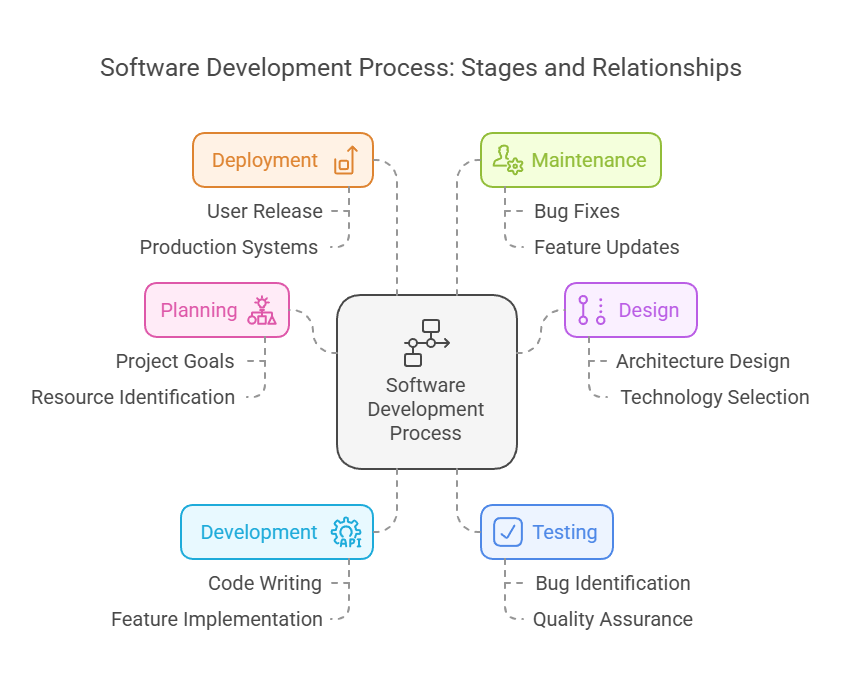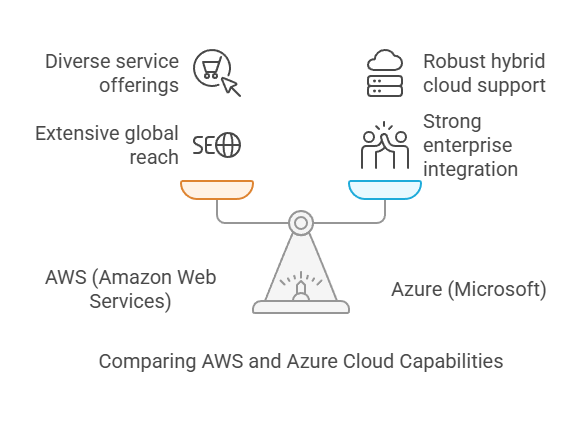Software Development At karyera

Software development is the process of creating, designing, deploying, and supporting software.
- Planning: This stage involves defining the project's goals, scope, and requirements.
It also includes identifying the resources needed and creating a project plan. - Design: In this stage, the software's architecture is designed.
This includes deciding on the software's overall structure, technologies to be used, user interface design, database models, and the flow of data within the system. - Development: This is where the actual coding of the software begins.
Developers write code based on the design specifications and implement the features required. - Testing: Once the code is written, the software undergoes rigorous testing to identify and fix any bugs or issues.
This ensures the software functions as intended and meets the quality standards. - Deployment: After successful development and testing, the software is deployed into a live environment.
This involves releasing the software to the users or into production systems. - Maintenance: Once deployed, the software may require updates to fix bugs, patch security vulnerabilities, or add new features based on user feedback.
Regular maintenance ensures the software continues to perform effectively over time and remains aligned with evolving user needs.
Software development is a complex process that requires a variety of skills and knowledge.
Software development encompasses a wide range of technologies, broadly categorized into:
Software development encompasses a wide range of technologies, broadly categorized into:
1. Programming Languages:
- Front-end
(User Interface):
- HTML,
CSS, JavaScript: Core languages for building web pages.
- Frameworks:
React, Angular, Vue.js - provide structure and efficiency for complex UI
development.
- Back-end
(Server-side Logic):
- Python,
Java, JavaScript (Node.js), PHP, Ruby, C#: Languages for handling
server-side operations, databases, and APIs.
- Frameworks: Django, Spring, Express.js, Laravel - provide pre-built components and streamline development.
2. Databases:
- Relational
Databases: MySQL, PostgreSQL, SQL Server - store data in tables with
well-defined relationships.
- NoSQL Databases: MongoDB, Cassandra - flexible data models for handling large volumes of unstructured data.
3. Cloud Computing:
- AWS (Amazon Web Services), Azure (Microsoft), GCP (Google Cloud Platform): Provide infrastructure, storage, and services for deploying and scaling applications.
4. DevOps Tools:
- Git:
Version control system for tracking code changes and collaboration.
- Jenkins,
CircleCI: Continuous integration/continuous delivery (CI/CD) tools for
automating builds and deployments.
- Docker, Kubernetes: Containerization technologies for packaging and deploying applications consistently.
5. Mobile Development:
- iOS
(Swift, Objective-C), Android (Java, Kotlin): Native languages and
platforms for building mobile apps.
- Cross-Platform Frameworks: React Native, Flutter - allow developers to write code once and deploy on multiple platforms.
6. Artificial Intelligence (AI) & Machine Learning
(ML):
- Python (with libraries like TensorFlow, PyTorch): Widely used for AI/ML development, data analysis, and machine learning algorithms.
7. Other Important Technologies:
- API
Development: Creating interfaces for applications to communicate with
each other.
- Data
Science & Analytics: Technologies for collecting, analyzing, and
interpreting data.
- Security:
Encryption, authentication, and authorization measures to protect software
and user data.



